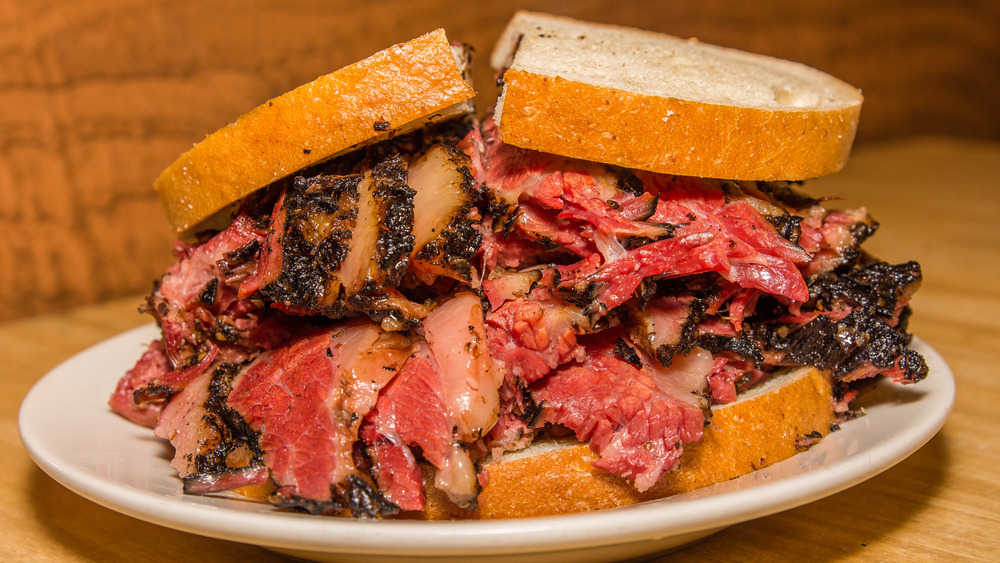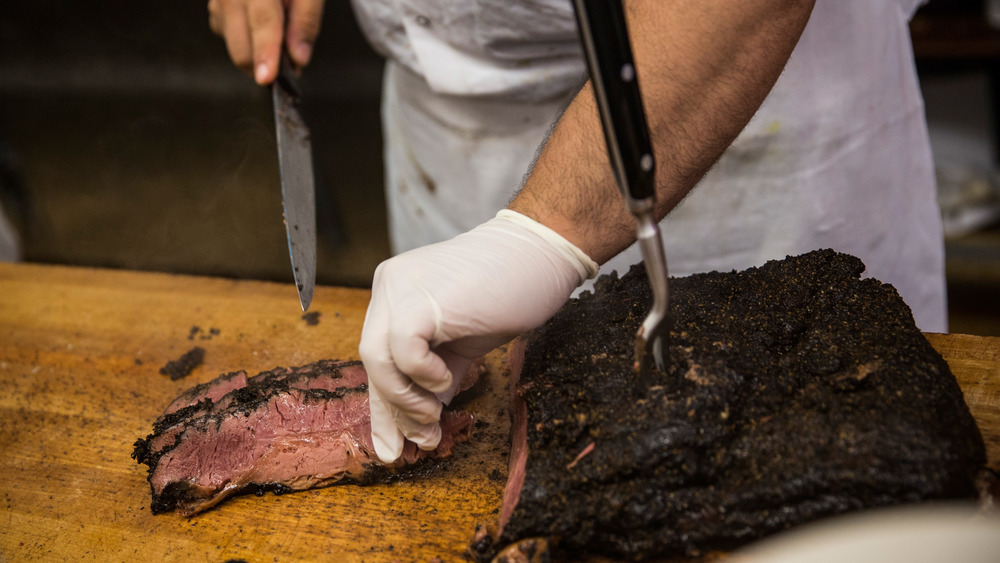The Real Reason Pastrami Is So Expensive
Can anyone really put a price tag on a heaping pile of hot pastrami layered perfectly between two delicious pieces of rye bread smeared lovingly with mustard? Unfortunately, yes they can, and that price can be, well, a little overwhelming if it's not something you order regularly. At Manhattan spots like Pastrami Queen and Katz's Deli, a hot pastrami sandwich can easily put you out to the tune of $20 or more, but what accounts for the sticker shock that comes with the beloved brined beef?
According to Medium, a combination of historical elements have shared in the blame for fluctuating pricing at one of New York's most famous delis. "Simply, the only aspect of Katz's Delicatessen that is subject to change is its prices. Uncontrollable external factors including economic depression, drought, and demand are to blame for the existence of this single nostalgic inconsistency." The aforementioned drought led to a shortage of cattle in 2014 and an increase in pastrami prices (via The New York Times).
The seemingly steep price of pastrami may also have something to do with the way it is made. According to one Quora poster, pastrami is expensive because it is processed in several ways. First, it's brined like corned beef, then it is dried and seasoned, then smoked, and finally steamed. And all of this happens before it is ever shaved down, put on bread, wrapped in deli paper, cut in two, and thrown in a bag with a scrumptious pickle to go.
Pastrami through the ages
Who do we have to have to thank for this delicious, albeit expensive, concoction? According to Spoon University, pastrami was initially invented by Eastern Europeans as a means of preserving meat. Jewish immigrants from a region previously known as Bessarabia introduced the meat in America. Prior to arriving here, Romanian Jews may have used goose breasts to make pastrami, because it was inexpensive and Kosher. Upon arriving in America in the late 19th century, it was likely they began using beef because it was cheaper.
Though its preparation has changed quite a bit (the original process of making pastrami involved placing meat in saddlebags — Giddy-up!) today's pastrami still recalls similar notes of its European predecessor. "The distinctive flavors of pastrami are smoke, spicy black pepper, and the sweet citrus tang of coriander," according to Taste Cooking. The savory, scrumptious version of beef pastrami we crave is now made by brining beef in salt, sugar, and spices for up to a week, then seasoning it with a dry spice rub, drying it for several days, and then smoking it for several hours. It's a lengthy process, but we think it's worth every penny.

